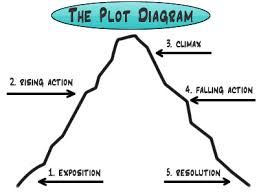

The author will also tell us about the story’s setting, usually by showing the characters’ ordinary lives. During the exposition, the author introduces our main character(s). Rising action takes place after the exposition or beginning of the story. Each of these events creates tension until we reach a climactic event or point of no return. For most writers, determining when the different modes can be woven together or used separately improves with practice.The rising action is part of a story that builds conflict through decisions made by the protagonist or events that happen to the protagonist. Distinctively, the action in this memorable novel is presented as eyewitness narrations by characters who participated in what they describe.Įvery work of fiction contains these modes, but the ratio varies. Emily Bronte’s narrative technique reveals her mastery of the writing craft. Despite the significant time-shifts in the novel, Emily Bronte maintained a continuous narrative using a multi-layered narration technique. Writers can be creative with the use of the modes as Emily Bronte’s Wuthering Heights illustrates. It tells, rather than shows, readers about important elements of the story or characters. It is used in the beginning and during transitions, for instance to inform readers about passage of time, change of place or mood, or change in the focus character.

They can even be contrasted with the others for effect.Įxposition is used to provide details about characters or the story. Writers should avoid making characters sound alike in real life people have their own individual ways of talking.Ībout the Narrative Mode of Thought and Monologueĭialogue, thought, and monologue move the story along, build tension, and reveal something about the character.

Readers become absorbed in the story when characters say things we do not expect of them and are not predictable. However, writers bring additional meaning into the interplay by including action and thoughts when relevant.ĭialogue boosts pace and narration. If a writer wants to highlight a trait in a particular character or focus on a subject of discussion, the writer maintains the focus by not distracting readers with other narrative modes during the dialogue. It is conversation between characters that can also help to evolve the characters. It is something that happens and can include dialogue, gestures, and other activities.ĭialogue is spoken action. Action drives the arc of the story and reveals information about the characters. The action in the story moves it forward. Readers are engaged and remain engaged when something happens to the fictional characters. The challenge is to avoid over-describing. It should serve the story and be a mechanism for immersing readers in the fictional world the characters inhabit. It gives the details about some place, person or thing. These narrative modes of fiction are action, dialogue, thought, description, and exposition.ĭescription sets the mood and the scene and provides an explanation. Experienced writers understand that structure, in the form of the five narrative modes of fiction, intimately. Stories are not hard to tell, but writing stories involves creating structure.


 0 kommentar(er)
0 kommentar(er)
